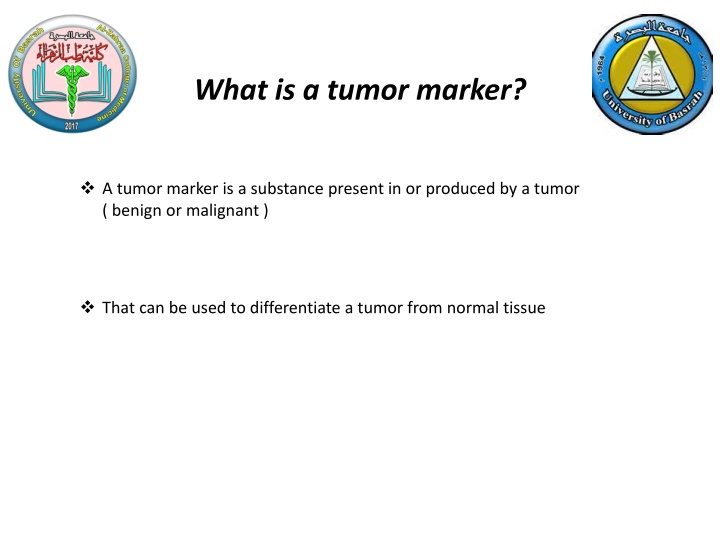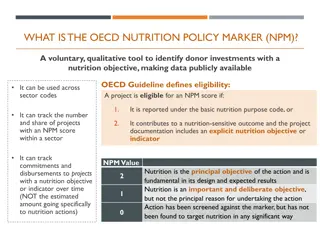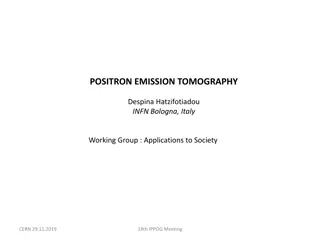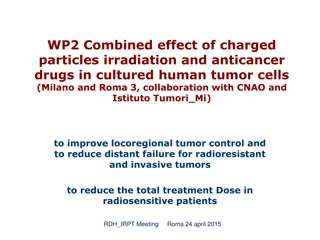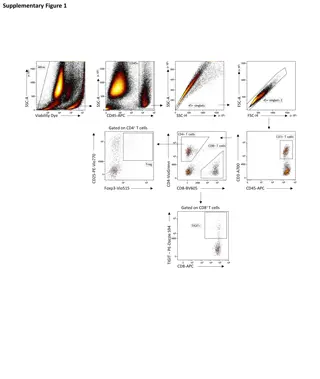What is a tumor marker?
Tumor markers are substances produced by tumors that help in diagnosis, screening, prognosis, and monitoring of cancer. Ideal tumor markers should be specific, sensitive, and reliable. Screening is recommended for individuals with a history of cancer, genetic mutations, or family history. Combining markers can enhance sensitivity and specificity for early detection. Monitoring tumor markers post-treatment aids in assessing response and detecting recurrence promptly.
Download Presentation

Please find below an Image/Link to download the presentation.
The content on the website is provided AS IS for your information and personal use only. It may not be sold, licensed, or shared on other websites without obtaining consent from the author.If you encounter any issues during the download, it is possible that the publisher has removed the file from their server.
You are allowed to download the files provided on this website for personal or commercial use, subject to the condition that they are used lawfully. All files are the property of their respective owners.
The content on the website is provided AS IS for your information and personal use only. It may not be sold, licensed, or shared on other websites without obtaining consent from the author.
E N D
Presentation Transcript
What is a tumor marker? A tumor marker is a substance present in or produced by a tumor ( benign or malignant ) That can be used to differentiate a tumor from normal tissue
Characteristics of an Ideal Tumor Markers Should be highly specific ( negative in all negative cases) (diagnosis) Should be highly sensitive ( positive in all positive cases).(diagnosis) Should provide a lead time over clinical diagnosis (Screening) The levels of the marker should correlate with the tumor burden.(prognosis) It is accurately reflecting any tumor progression or regression (monitoring) Procedure of estimation of the marker should be reliable The test used for detection should be relatively cheap
Applications of Tumor Markers 1- Diagnosis ( D) : to help to establish the diagnosis 2- Screening (S) : to identify patients with early cancer before appearance of clinical manifestations 3- Prognosis (P) : to assess the aggressiveness 4- Monitoring (M) : follow up of regression or progression A- Evaluate the Response to Treatment ( RT) B- Detection pf Recurrence (R) 5- Determination of Risk : i.e. in genetically predisposed .
Who needs to be screened 1. Person have had cancer in the past 2. Have two or more first-degree relatives who have had cancer 3. Have certain gene mutations that have been linked to cancer 4. Environmental exposure
To increase sensitivity & specificity of tumor markers A- Combination of multiple tumor markers e.g. Combination of Carbohydrate Antigen 125 (CA 125) with ultrasonography for early detection of ovarian malignancy B-Combination of multiple tumor markers with other procedures
Monitoring of disease , Response of Treatment & Detection of Recurrence Markers usually increase with progressive disease , decrease with remission & change significantly with stable disease . After treatment ( surgical resection , radiation or chemotherapy ) ,tumor marker routinely followed serially ( to monitor the response to treatment & recurrence ) It is desirable to monitor the patient using a highly sensitive tumor marker detect recurrence as early as possible so, rising tumor marker levels may detect recurrence of disease before or radiological evidence of disease is apparent ( biochemical recurrence)
Factors that affect serum concentration of tumor markers False positive results occur with - Inflammatory conditions - Benign conditions - Presence of liver disease : causes disturbances in metabolism of some tumor markers - Disturbances of renal function : affects levels of some tumor markers - As a consequence of different physiological conditions : as in preg affect BHCG , AFP )
Factors that affect serum concentration of tumor markers False negative results occur with - Insufficient blood circulation in the tumor - Production of autoantibodies against the marker - Rapid degradation & clearance of the marker
good tumor marker should 1- It should be highly sensitive 2- It should be highly specific 3- 100% accuracy in differentiating between healthy individual and tumor patient 4- should be able to differentiate between neoplastic and non-neoplastic disease and show positive correlation with tumor volume and extent 5- It should predict early recurrence and have prognostic value 6-It levels should be preceding the neoplastic process , so that it should be useful for screening early cancer
Potentialuses Screening in general population Differential diagnosis of symptomatic patients Clinical staging of cancer Estimating tumor volume As a prognostic indicator for disease progression Evaluating the success of treatment Detecting the recurrence of cancer Monitoring response to therapy
